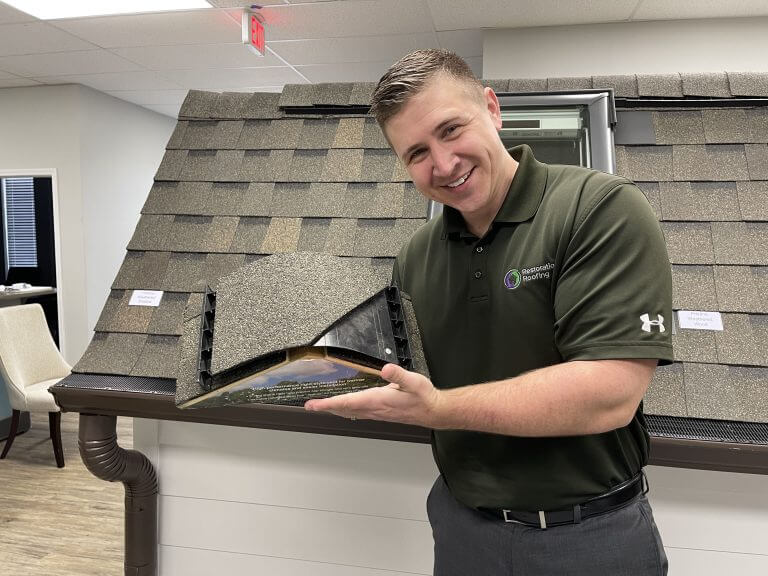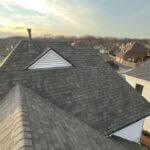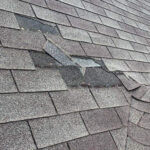
Why Your Home Needs Proper Attic Ventilation
Your roof’s attic ventilation isn’t something you think about every day, but it does play an important role in the well-being of your home. Having the right amount of ventilation can extend the lifespan of your Memphis roof and determine how much you pay for heating and cooling. Plus, it can prevent those awful ice dams!
How Attic Ventilation Works
Good ventilation in your attic helps prevent heat and moisture buildup that can wreak havoc on your home. A roof with proper ventilation will have intake vents along the soffits and exhaust vents or ridge venting at the roof’s ridge. Having the cooler air being drawn in through the soffit vents, and warm air escaping through the vents on the roof’s ridge will allow for continuous air flow through the space.
Signs of Improper Ventilation
There are a number of signs to watch out for with inadequate attic ventilation:
- Dampness or water stains on your roof decking, or evidence of decay in your roof’s structural supports
- Thermal blisters and thermal cracking to your shingles that result in premature granule loss and shingle loss
- Rust and corrosion on metal materials in the attic. For example: nail heads, HVAC system components, and light fixtures
- A buildup of ice dams during the winter months
- An unexplained increase in your home’s heating and cooling bills
We recommend all homeowners do a routine inspection of their attic to check for signs of improper attic ventilation, but always keep your safety in mind. Avoid getting on your roof by walking around your home at ground level. If you suspect you have signs of damage, call a Memphis roofing professional to perform an inspection and do not get on the roof yourself.
What to Do About Poor Ventilation on Your Roof
If you have concerns about your attic’s ventilation or notice any of the above warning signs, it’s time to call a roofing contractor to perform an inspection. They will be able to inspect the condition on your roof and take into account the area’s climate, the age of the shingles, and your roof’s architecture.
If the contractor determines that your roof is at the end of its lifespan, you have several venting options for your new roof.
Types of Ventilation
Ridge Vents: Ridge vents are a popular option with many homeowners and at Restoration Roofing we offer several ridge vents options.
Ridge vent is installed at the peak of your roof and runs across the entire span of your roof line. The small gap on the underside of the material allows hot air to escape.
Being located at the roof’s highest point allows for the hottest air to escape the attic space. And since they run the entire length of the roof, they have the most surface area necessary to release large amounts of hot air.
To learn more about the different types, check out our recent review video showcasing the Atlas ridge vent line.
Static Vents: Static vents are another popular venting option. They are small metal boxes that rest across the roof, close to the peak, and come in a range of shapes like round, square or slanted. These vents work by allowing heat to escape out of the roof through the convection method. You may also hear them called box vents or turtle vents.
Turbine Vents: Turbine vents, also known as whirly birds, work by drawing out hot air through convection to move the air in your attic even when there is no wind.
Gable Vents: These vents are located on the side of the house, just below the roof’s peak. Gable vents utilize cross-ventilation to keep air moving through the attic space and are used on a gable style roof. However, they are not always as effective on more complex roof styles due to air flow being blocked by rafter beams, peaks, dormers and other parts of the roof.
Soffit Vents: Soffit vents are located under what most people refer to as the roof overhang. They are designed with small holes that allow cool air to flow into your attic space where it helps push hot air out of your home through the exhaust vents.
How Do I Find the Best Attic Ventilation?
Proper ventilation is important for the lifespan of your roofing system. If you suspect your roof may be having issues due to issues with ventilation, we recommend calling a Memphis roofing contractor to inspect. It’s not a DIY project that that average homeowner should take on, and it can be dangerous to access.
At Restoration Roofing, we can give you a complimentary inspection to determine your roof ventilation problems and offer you the best resolution. Contact us today to schedule your appointment.





